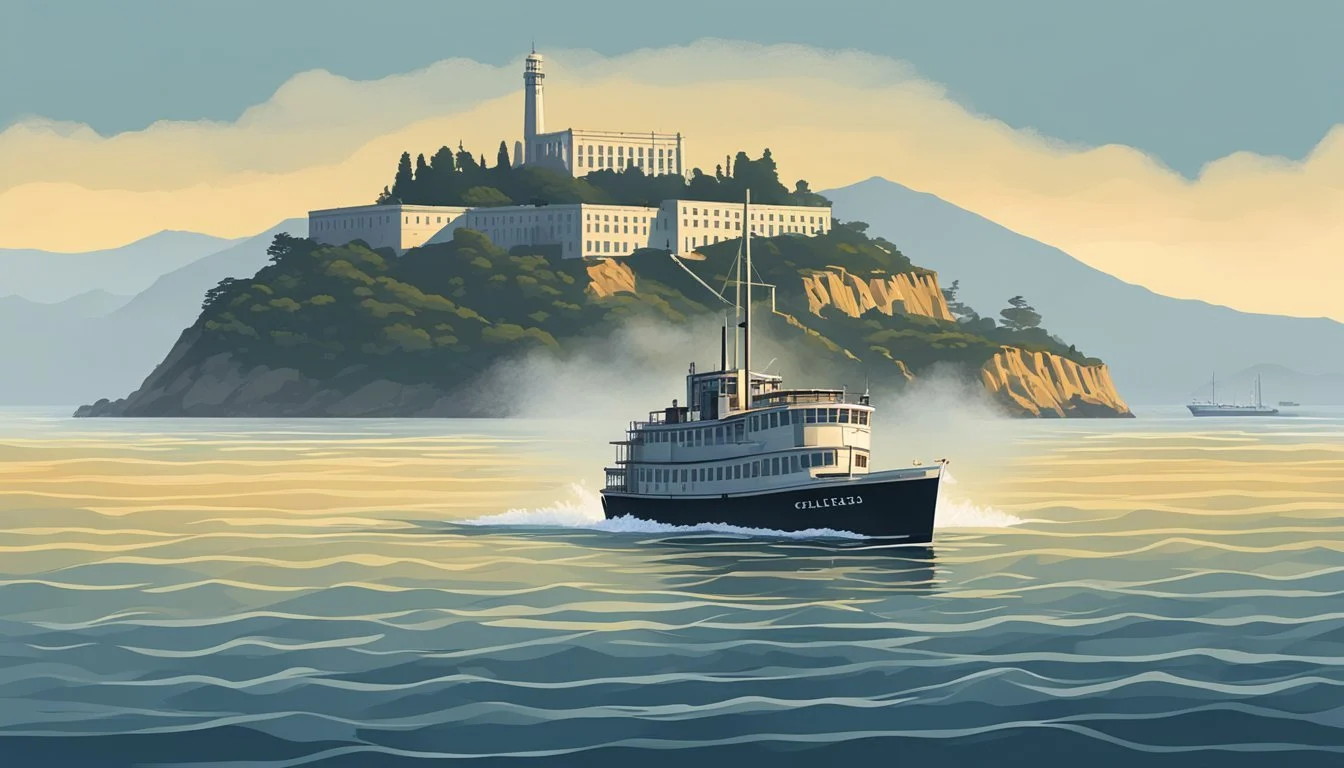Escaping Alcatraz: The Real Story Behind the Infamous 1962 Prison Break
Alcatraz Federal Penitentiary, located on a rocky island in San Francisco Bay, gained notoriety as an escape-proof prison. Despite its formidable reputation, on June 11, 1962, three inmates executed a daring escape that captured public imagination and inspired the 1979 film "Escape from Alcatraz."
Frank Morris and brothers John and Clarence Anglin meticulously planned their breakout for months. Using ingenuity and patience, they crafted dummy heads to fool guards, dug through cell walls, and fashioned a makeshift raft from raincoats. Their escape remains one of the most infamous in American history.
The fate of the escapees remains a mystery to this day. While official reports declare them presumed drowned in the cold, treacherous waters of San Francisco Bay, some evidence suggests they may have survived. This lingering uncertainty has fueled speculation and continued interest in their story for over six decades.
Alcatraz Island: The Inescapable Fortress
Alcatraz Island stood as a formidable prison, designed to hold America's most dangerous criminals. Its isolation and treacherous surrounding waters made escape attempts extremely risky.
History of Alcatraz Federal Penitentiary
Alcatraz began its life as a federal penitentiary in 1934. It was chosen for its natural isolation, separated from San Francisco by 1.25 miles of frigid, turbulent waters.
The prison housed notorious criminals like Al Capone and George "Machine Gun" Kelly. It gained a reputation as America's toughest prison, where the worst offenders were sent.
Alcatraz operated for 29 years, closing in 1963 due to high operating costs. During its tenure, it held over 1,500 prisoners, with a maximum capacity of 336 at any given time.
Geographical Challenges and Security Measures
Alcatraz's location presented significant obstacles for potential escapees. The island was surrounded by strong currents and cold water temperatures, often below 50°F (10°C).
Guards were strategically positioned in gun galleries and watchtowers, maintaining constant surveillance. The prison's interior featured a series of gates, creating a complex system of controlled movement.
Cells were equipped with tool-resistant bars, and prisoners were counted multiple times daily. These measures, combined with the island's natural defenses, led to Alcatraz being dubbed "The Rock" - a prison from which escape seemed impossible.
The Infamous Escape Attempt
The 1962 Alcatraz escape attempt remains one of the most daring and mysterious prison breaks in history. Three inmates engineered an elaborate plan to flee the supposedly inescapable island fortress.
Frank Morris and The Anglin Brothers
Frank Morris, John Anglin, and Clarence Anglin were the masterminds behind the infamous escape. Morris, born in 1926, had a history of escapes from other prisons. The Anglin brothers, originally from Georgia, were convicted bank robbers.
All three men were serving time for various crimes when they arrived at Alcatraz. Their criminal backgrounds and dissatisfaction with prison life likely fueled their desire to escape.
Planning the Escape
The trio spent months meticulously planning their breakout. They widened the ventilation ducts in their cells using stolen spoons and other makeshift tools.
To avoid detection, they created dummy heads from soap, toilet paper, and human hair from the prison barbershop. These decoys were placed in their beds to fool guards during nighttime checks.
The escapees also fashioned a raft and life preservers from raincoats and contact cement. They tested their creations in secret, preparing for the treacherous swim across San Francisco Bay.
Execution of the Escape Plan
On June 11, 1962, Morris and the Anglin brothers put their plan into action. They placed the dummy heads in their beds and squeezed through the widened vent holes behind their cell walls.
The men climbed up utility pipes to the roof, then slid down a kitchen vent pipe to reach the ground. They inflated their makeshift raft at the water's edge and set off into the cold, choppy waters of the bay.
Despite an extensive manhunt, no trace of the escapees was ever found. The FBI officially closed the case in 1979, concluding that the men likely drowned. However, speculation about their survival continues to this day.
Investigation and Theories
The investigation into the Alcatraz escape of 1962 led to an extensive FBI search and spawned numerous theories about the fate of the escapees. Conflicting evidence and reported sightings fueled speculation for decades after the incident.
FBI Investigation
The FBI launched a massive manhunt immediately after the escape was discovered. Agents combed the San Francisco Bay area and surrounding regions for any signs of Frank Morris and the Anglin brothers. They analyzed the makeshift rafts and life preservers found on Angel Island, concluding the items were likely used in the escape attempt.
The investigation remained open for 17 years before being officially closed in 1979. Despite following up on hundreds of leads and alleged sightings, the FBI was unable to conclusively determine whether the men survived.
Alternate Theories on the Escape Outcome
Several theories emerged about the fate of the escapees. Some believe they successfully reached Angel Island and made their way to freedom. A 2018 letter, purportedly from John Anglin, claimed all three men survived but that Morris and Clarence Anglin had since died.
Others speculate the men drowned in the cold, turbulent waters of San Francisco Bay. This theory is supported by the lack of credible sightings or evidence of their survival in the years following the escape.
A 2014 study suggested it was possible to reach land by riding tidal currents, reigniting debate about the plausibility of a successful escape. The mystery continues to captivate public interest decades later.
Cultural Impact
The Alcatraz escape has left an indelible mark on American popular culture, inspiring numerous artistic works and captivating public imagination for decades.
Media Portrayals
The 1979 film "Escape from Alcatraz" starring Clint Eastwood brought the daring prison break to mainstream audiences. This cinematic adaptation dramatized the events, cementing the escape's place in pop culture.
Television documentaries have also explored the incident, offering in-depth analyses and theories about the escapees' fate. The History Channel and National Geographic have produced specials, fueling continued interest in the case.
Books like "Escape from Alcatraz" by J. Campbell Bruce have provided detailed accounts of the escape, becoming authoritative sources on the subject. These works have helped keep the story alive in public consciousness.
Escape from Alcatraz in Pop Culture
The Alcatraz escape has inspired various forms of entertainment beyond film and literature. Video games like "The Escapists" have incorporated elements of the famous breakout, allowing players to plan their own prison escapes.
References to the Alcatraz escape appear in TV shows and movies, often as a benchmark for impossible feats. It has become shorthand for cunning and resourcefulness in popular discourse.
The annual Escape from Alcatraz Triathlon, held in San Francisco since 1981, draws participants from around the world. This event showcases the enduring fascination with the prison and its most famous escape attempt.
Modern Day Alcatraz
Alcatraz Island has transformed from a notorious prison into a popular national park and cultural landmark. Its rich history and stunning San Francisco Bay views attract over a million visitors annually.
The Island as a Tourist Attraction
Alcatraz Island opened to the public in 1973 as part of the Golden Gate National Recreation Area. Visitors can explore the former prison buildings, including the main cellhouse, recreation yard, and warden's house.
Audio tours narrated by former inmates and guards provide immersive insights into daily life on "The Rock." Exhibits showcase escape attempts, notable prisoners, and the island's Native American occupation.
Ferries depart regularly from Pier 33 in San Francisco, offering scenic bay views during the short trip. Night tours add an eerie atmosphere to the experience.
Educational and Historical Preservation Efforts
The National Park Service manages Alcatraz, focusing on preserving its structures and educating the public about its complex history. Ongoing restoration projects maintain the island's buildings and natural habitats.
Rangers conduct informative programs on topics like military history, infamous inmates, and the island's ecology. School groups participate in educational activities tailored to various grade levels.
The Alcatraz Preservation Project works to stabilize and restore deteriorating structures. This effort ensures future generations can explore the island's unique past.
Researchers continue to study Alcatraz's role in American history, uncovering new details about its time as a fortress, prison, and symbol of incarceration policies.




